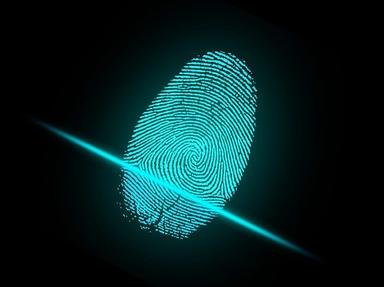Quiz Answer Key and Fun Facts
1. Which of these is a name given to the examination of fingerprints?
2. What is the function of the ridges on our fingers which create fingerprints?
3. What causes fingerprints to be left behind when we touch things?
4. Which of the following is NOT one of the three basic types of fingerprint patterns?
5. At what age do human beings acquire fingerprints?
6. Which of the following statements about fingerprints is NOT true?
7. Which animal is said to have fingerprints virtually indistinguishable from those of human beings?
8. Why is it usually impossible to obtain fingerprints from textiles such as fabric, clothing and carpet?
9. Who is generally recognised as being the first person to use fingerprints as a means of identification?
10. In the USA, what is the minimum number of matching points required to identify an unknown latent print?
11. In which country was the first case of a criminal conviction based on fingerprint evidence?
12. In 1902, Henry (Harry) Jackson became the first person in the United Kingdom to be convicted on fingerprint evidence. What was his crime?
13. In 1910, Thomas Jennings became the first person in the United States of America to be convicted on fingerprint evidence. What was his crime?
14. Who was responsible for starting the first national fingerprint register in America in the 1920s?
15. Which famous author was the first to utilise fingerprint evidence to solve a fictional crime?
Source: Author
MotherGoose
This quiz was reviewed by FunTrivia editor
crisw before going online.
Any errors found in FunTrivia content are routinely corrected through our feedback system.


